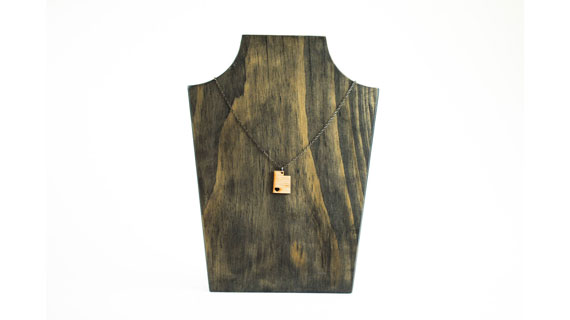Indigenous Spirit For Collective Well-Being
Posted: November 17, 2020 | Author: Hannah Zander | Read Time: 4 minutes

Apache Crown Dancers by Allan Houser depicts a moment during an Apache girl’s traditional rite of passage called the Sunrise Ceremony. This four-day ceremony is a physically and spiritually intense transition into womanhood. Its purpose is to re-enact the narrative of the White-Painted Woman, who is the embodiment of procreation and a vital force of life in Apache culture. The event requires the girl’s entire circle of associates to participate in various roles of dancing, gift-giving & receiving, and blessing. This instills Apache values upon her, making her an official member of the community, and upholds a central tradition for all involved.
 At the time of the creation of Apache Crown Dancers, the practice of this ceremony had been banned by the United States government for 44 years, and would continue to be for another 26 years until the American Indian Religious Freedom Act of 1978 allowed for it to be openly performed on reservations again.
At the time of the creation of Apache Crown Dancers, the practice of this ceremony had been banned by the United States government for 44 years, and would continue to be for another 26 years until the American Indian Religious Freedom Act of 1978 allowed for it to be openly performed on reservations again.
Houser is known for effectively communicating the spiritual and cultural values of the Apache in the modernist style with his larger than life sculptures. He often chose the Gaans (aka Mountain Spirit or Crown Dancers) featured in this piece as recurring subjects in his body of work. They are mountain-dwelling supernatural beings whose manifestation is essential to the tribe's well-being. During the Sunrise Ceremony their dance wards off evil and prevents illness. Additionally, they are featured in shamanic ceremonies associated with the active healing of the sick and injured.
What do you see?
With each piece, Houser creates a window into his culture’s history and traditions. Apache Crown Dancers illustrates a pivotal moment in a young woman’s life and the celebration of her becoming an active member of the Apache community.

- Which coming of age events have you experienced in your life?
- How profound were they in shaping your identity and relationship to your community?
- What role did your surrounding community play in facilitating the event and encouraging your development?
- Are there similarities in the Apache Sunrise Ceremony when compared to your pivotal experiences?
- Can you think of a figure, similar to the Gaan, in your community? How do they promote well being for you and others close to you? How does that keep everyone healthy and balanced?

A Bit About the Artist
Houser began painting in this illustrative style while attending “The Studio School” associated with the Santa Fe Indian School at 20 years old in 1934, learning from Dorothy Dunn. Although the painting program's mission was to encourage students to develop a style derived from their cultural traditions, Houser ironically felt it was too restrictive for his development as an artist and left the program in 1938.
It was during his study with Swedish muralist Olle Nordmark that he began experimenting with three-dimensional media. During WW2 he found work in the shipyards of Los Angeles and continued to make work via the Pasadena Art Center where he was exposed to the work of modernist sculptural artists such as Jean Arp, Henry Moore and Barbara Hepworth. This exposure would give him direction in his development as a sculptor and success as a living artist.
From 1952 to 1962 Houser lived in Brigham City, Utah, teaching at a Navajo boarding school called the Intermountain Indian School. He completed many paintings during this time in a variety of media considered experimental in comparison to his earlier work.
This piece is part of the permanent collection at the Southern Utah Museum of Art.
Produced by the Southern Utah Museum of Art
Located on the campus of Southern Utah University, SUMA features the artwork of regional artists known for their landscapes, faculty and student artists from the SUU Department of Art & Design, as well as emerging and distinguished artists from around the country. Strengths of the nearly 2,000-object permanent collection include the body of work by Jimmie F. Jones that exemplifies his notable career in the region, as well as a robust collection of prints featuring well-known artists such as Pierre-Auguste Renoir, Salvador Dalí, Katsushika Hokusai, Thomas Hart Benton, and others. Part of the Beverley Taylor Sorenson Center for the Arts, which also includes the Utah Shakespeare Festival, SUMA is free and open to the public.
Image Credits
Image 1 - Allan Houser (American b. 1914- d.1994), Apache Dancers, 1952
Limited Edition Silkscreen Print Reproduction, Tewa Enterprises, Santa Fe, New Mexico
Image 2 - Abstract Crown Dancer ll, 1991, bronze (edition of 12)
Image 4 - Allan Houser (American b. 1914- d.1994) working on the wax original for Navajo Runner
This article was published more than 3 years ago and might contain outdated information or broken links. As a result, its accuracy cannot be guaranteed.
Tags: SUMA

